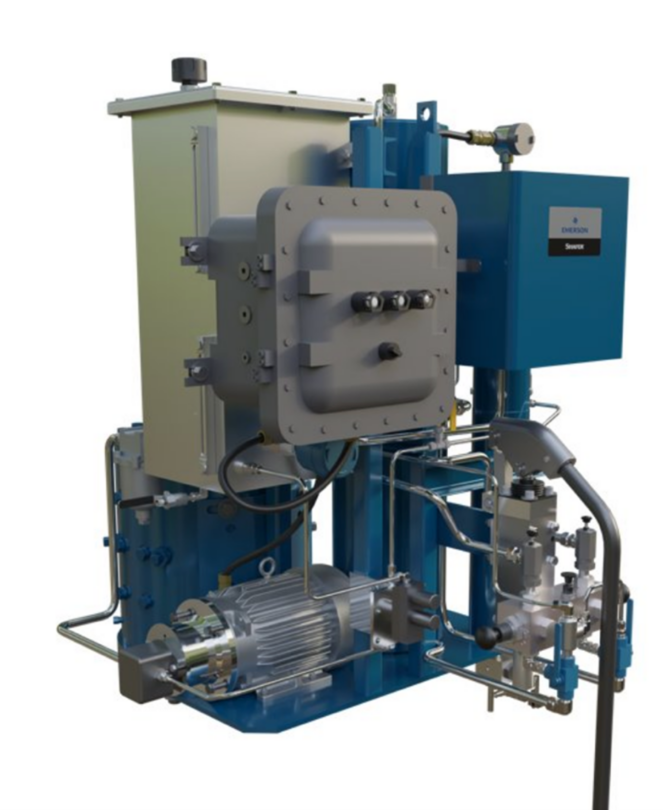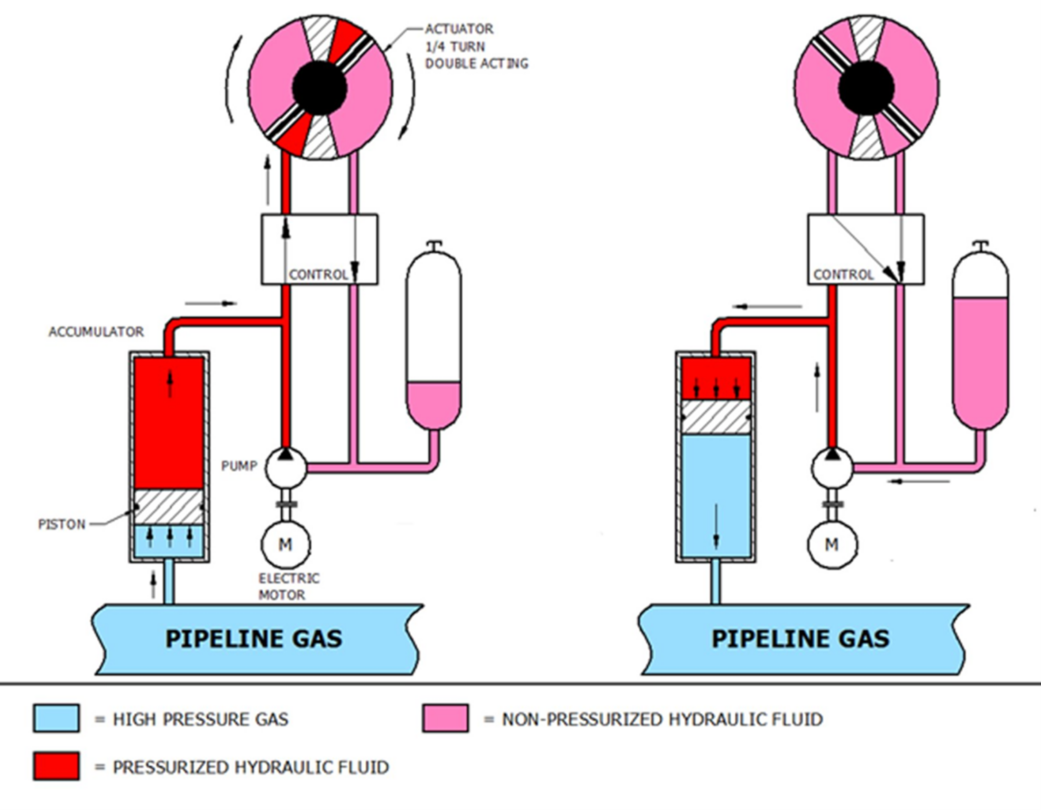At the Emerson Exchange EMEA 2024 in Düsseldorf, Håkon Espvik, hydraulics product manager at Emerson, explained how the need to meet greenhouse gas reduction targets will transform the actuation technology used for gas pipeline shutdown valves.
Regulations and reduction targets, such as the European Union’s “Fit for 55” package, which aim to reduce greenhouse gas emissions by 55% by 2030, require the oil and gas industry to find ways to reduce methane emissions. Emissions of methane into the atmosphere are estimated to be about 30 times worse for climate change than carbon dioxide, so reducing methane emissions is a focus across the whole natural gas value chain. Natural gas transmission, compression and storage present significant opportunities to reduce emissions.
There are three types of emissions. Combustion emissions, which come from compressor exhaust, burner, flares and heaters. Vented emissions, which are controlled and intended releases from station blowdowns, pneumatic devices and pumps. And finally fugitive emissions, leaks or unintended releases, which come from valves, actuators and regulators, sealings surfaces and packings.
Gas-powered actuation of valves has been used in compressor stations and on transmission pipelines for decades. From a technological point of view, there is no need for a change. Compared with electric, pneumatic and electro-hydraulic actuation methods, gas-powered actuation offers the best combination of size, torque, speed and control. There are also no concerns about the availability of power, which for remote applications can be an issue. However, there is an emissions problem. At the end of the actuation cycle, the gas used to power the device is exhausted into the atmosphere. With a large bore valve that is 48” in diameter, this could mean emissions of up to 50 Kg CO2E for every stroke of the valve.

Shafer™ ECAT is unique a valve operating system (VOS) with European and US patents from Emerson that reinjects gas into the pipeline to prevent emissions.
Emissions controlled actuation technology (ECAT) offers all the positive attributes of a conventional gas-power actuator but eliminates the emissions problem by reinjecting the high-pressure gas back into the pipeline. The Shafer™ ECAT is a Valve Operating System™ from Emerson which works by using the pipeline gas to pressurize hydraulic fluid and then the high-pressure hydraulic fluid is used to stroke the actuator. This is performed by a unique gas-under-oil accumulator, which is not dependent on electric power, that transforms pneumatic power from the gas pipeline into hydraulic power, with one or two actuator stroke capacity.

Pipeline gas is used to pressurize hydraulic fluid, which is used to stroke the valve, before it is reinjected into the pipeline.
When the stroke is complete, a small electric motor automatically turns on to power a hydraulic pump that pushes/reinjects the gas into the pipeline. A thermal volume controller ensures all the gas is reinjected. The electric motor runs from a small power pack, that can connect to utility electrical power or solar power for remote applications. In the event of an electrical power failure, the accumulator will maintain reserve hydraulic power for a specified number of valve strokes.
The Shafer ECAT can be retrofitted to convert the installed base of gas-powered actuators. A single ECAT system can be used to convert multiple actuators. For remote locations and where the actuation is rarely used, there is an option to utilize manual re-injection to replace the electric motor used to load the accumulator. In the US, the Shafer ECAT system has already been installed in approximately 80 installations, demonstrating the concerted efforts to reduce emissions.



